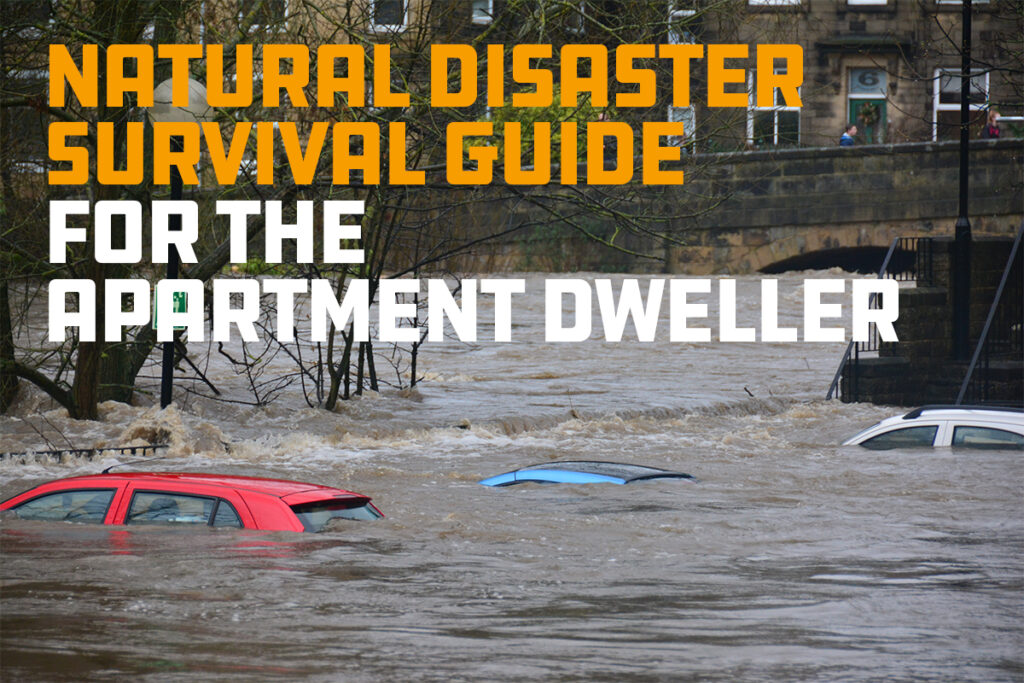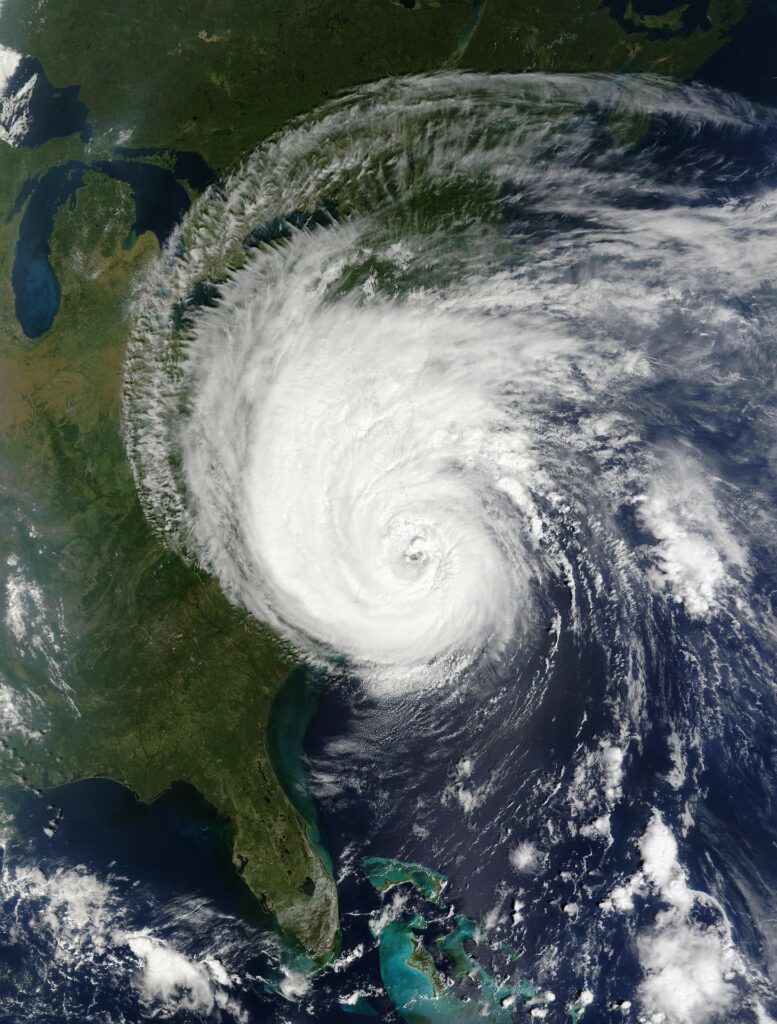
How To Prepare for a Natural Disaster While Living in an Apartment

How to prepare for a disaster from an apartment
As we saw during the 2021 grid-down situation in Texas, it is extremely important to prepare for natural disaster survival. Short-term problems like a hurricane, blizzard, tornado, or flash flood can lead to devastating results if you aren’t ready.
Preparing for a disaster while Living in an apartment can often feel intimidating. For individuals living in smaller spaces like apartments to feel they have room to prepare and store items they would need. Thankfully, there are a few simple steps you can take to get your apartment ready for a natural disaster.

Prepare for Common Natural Disasters
Natural disaster survival in an apartment doesn’t have to be a difficult or scary thing to prepare for. As you consider the key factors that are required to live, the steps to gather and store them can be fairly simple.
Human beings can survive three weeks or longer without food, but they can only live for a few days without water. Because of this, one of the best things you can do is store packaged food and a few gallons of water in your house.
The kind of natural disaster survival you need depends on where you live. During the grid-down situation in Texas, residents didn’t have access to electricity and water for days at a time. In this case, gallons of water, flashlights, first aid kits, and packaged food would have been incredibly useful.
During cold snaps, it is also important to have protection from freezing temperatures. Mylar thermal blankets are known for being great at retaining heat. You can also add these blankets and survival gear to the trunk of your vehicle in case it breaks down during a blizzard.
While 2021’s Texas grid down situation may be a once-in-a-decade event, tornadoes, floods, earthquakes, and hurricanes happen all the time. These disasters may be strikingly different, but they often require similar survival gear. If you can provide your family with water, food, and protection from the elements, you will be able to safely ride out any unforeseen weather event.
Items to Store in Your Apartment for Natural Disasters
A few simple products can determine whether your family is safe or not during a natural disaster. If you really want to get into the nuts and bolts of survival, the Federal Emergency Management Agency (FEMA) even has a preparedness guide you can read for free.
Beyond these preparations, there are a handful of items you should always have handy in case of an emergency.

1. Candles
The grid-down event in Texas taught everyone the importance of electricity. As long as the electricity is out for just a few hours, you can always use your phone for light. But for longer power outages, it’s a good idea to invest in candles.
Long-burning UCO Candles work great in a disaster and will give you up more than nine hours of light. Plus, the citronella option can also ward away mosquitos and other pets. Make sure you also have lighters or matches to light them as well.
2. Mylar Blankets
While mylar blankets might not look particularly pretty or comfortable, they could save your life in a snowstorm or cold snap. Most of these shiny, reflective blankets weigh as little as 2 ounces, so they are easy to fit into your apartment’s storage closet. Despite their diminutive size, mylar blankets can trap up to 90 percent of your body heat and keep you warm.
Because these blankets are so effective, many hikers use them as natural disaster survival gear. They are also popular among backcountry skiers and outdoor enthusiasts.

3. Portable Grills
If your area is hit by a hurricane or a blizzard, you might not have electricity for a few days or even weeks. While your survival kit should always include prepared food that doesn’t have to be cooked, this kind of diet can get boring quickly. A portable grill allows you to cook food in an apartment without any electricity.
Along with providing a way to cook meals, a portable grill like a UCO Flatpack Grill (shown above) can also double as a temporary heater. Since many apartments don’t have fireplaces, this is a great way to add a backup heating source to your home. Carbon dioxide from wood and coal fires can be hazardous, so you should always follow the directions on the grill and use it in an area with plenty of air movement.
4. Water
This sounds obvious, but it is the most important element necessary for natural disaster survival. Even if the water lines work after a natural disaster, the water could temporarily be too contaminated to drink. As a general rule, each person needs a gallon of water per day for drinking and other various uses.
If you have three people in your family, then you should keep a backup supply of nine gallons for three days. These can easily be stored in closets or under beds if you live in an apartment.
You can also protect yourself from long-term water outages by getting a LifeStraw to filter water from puddles and streams. Best of all, you can get a cheap one for around $13.
5. Food Storage
Ideally, you should have a minimum three-day supply of food you can carry with you if you are under evacuation orders. You should also have at least a two-week supply of food in your home for natural disaster survival.
When you store food, you should think about what kind of food can be easily prepared in a disaster. This includes basics like rice, beans, peanut butter, granola bars, canned goods, and more.
Anything in your fridge or freezer will likely go bad so the majority of your disaster preparedness food should be items that don’t need refrigeration and you can eat without cooking.
6. First Aid Kit
You need a first aid kit for natural disasters, but they are generally a good idea to keep around for any occasion. A decent first aid kit includes materials for treating cuts, sprains, insect bites, swelling, and scrapes. Plus, there will often be a small binder of information about how to treat different ailments.

7. Candle Lanterns
When you are without power, light doesn’t have to be an issue thanks to candle lanterns, which work without any electricity. The candle is inserted inside of the lantern, and the sides of the lantern protect the flame from any breeze.
If you use UCO white or citronella candles, the candle lantern will burn for about nine hours. The beeswax candles will last for more than 12 hours, which makes these lanterns a great investment.
8. Hand-Cranked Radio
If the electricity is out, many cell towers will only work for a few hours or days before they die. They have backup batteries, but these batteries will only power the cell towers for so long. At some point, communication channels like cell phones and the internet will no longer be an option.
Thankfully, hand-cranked radios will work without electricity. You simply have to turn the crank on the side to power the radio and flashlight. Once you’ve hand-charged your radio, you can even plug your other devices into it and charge them as well.
Also devices that can both provide light and charge your phone can be handy, if the power is out for a day or two. Check out these portable power bank lanterns from UCO.

9. Dust Masks
When it comes to natural disaster survival, many people forget to store dust masks in their homes. If there is an earthquake, shattered buildings can release harmful chemicals, dust, and fragmented building materials into the air. Airborne dangers can also occur following a wildfire or any event involving damaged buildings and fires.
A dust mask is an easy way to keep bad air out of your lungs. If you are sheltering in an apartment, you can also use plastic sheeting and duct tape to seal all of your doors and windows.
Prepare Your Apartment for a Natural Disaster Before One Strikes
It is impossible to know when a disaster will strike but it is possible to always be ready for them. The best thing you can do for natural disaster survival is to get your apartment prepared in advance. With the right products, you and your family can relax and wait out the next disaster.

